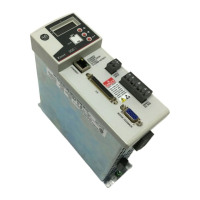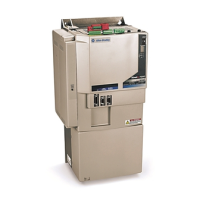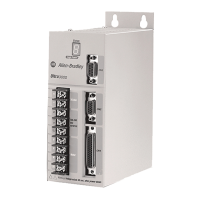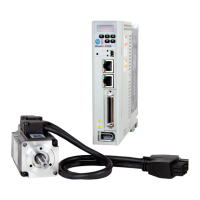72 Rockwell Automation Publication 2094-UM001J-EN-P - March 2017
Chapter 4 Connector Data and Feature Descriptions
Control of the relay to release the motor brake (BC-5 and BC-6) is
configurable in the Logix Designer application (refer to Configure Axis
Properties on page 151
). An active signal releases the motor brake. Turn-on
and turn-off delays are specified by the BrakeEngageDelayTime and
BrakeReleaseDelayTime settings. Refer to Controlling a Brake Example on
page 213
for brake coil currents.
The resistive brake relay (BC-1 and BC-2) controls the resistive brake module
(RBM) contactor. The RBM module is wired between the drive and motor by
using an internal contactor to switch the motor between the drive and a
resistive load. The RBM module contact delay is the time it takes to fully close
the contactor across the motor power input lines, and must be configured in
the software. Refer to RBM Module Interconnect Diagrams beginning on
page 269
for wiring examples.
These steps provide one method you can use to control a brake.
1. Wire the mechanical brake according to the appropriate interconnect
diagram in Appendix A beginning on page 187
.
2. Enter the BrakeEngageDelay and BrakeReleaseDelay times in the Logix
Designer application.
Refer to Axis Properties>Parameter List. The delay times must be from
the appropriate motor family brake specifications table in the Kinetix
Rotary Motion Specifications Technical Data, publication KNX-
TD001.
3. Use the motion instruction Motion Axis Stop (MAS) to decelerate the
servo motor to 0 rpm.
4. Use the motion instruction Motion Servo Off (MSF) to engage the
brake and disable drive.
IMPORTANT Motor parking-brake switching frequency must not exceed
10 cycles/min.
IMPORTANT Holding brakes that are available on Allen-Bradley rotary motors are
designed to hold a motor shaft at 0 rpm for up to the rated brake-
holding torque, not to stop the rotation of the motor shaft, or be used as
a safety device.
You must command the servo drive to 0 rpm and engage the brake only
after verifying that the motor shaft is at 0 rpm.
